Have you noticed a sudden shift in your Google rankings?
Before you panic, let me reassure you: It's perfectly normal for most sites to experience some ranking fluctuations or losses every now and again.
In most cases, search results rectify themselves and rankings go back to normal pretty quickly.
But, what happens when rankings of your target search queries grow worse with each passing day, affecting organic traffic, CTR, and overall business?
In this post, I'll show you how to analyze a sudden change in keyword rankings, get a good handle on the reasons behind it, and come up with a plan of recovery. Use the links below to jump ahead.
Table of Contents:
- Why do Keyword Rankings Fluctuate?
- What to Do When Keyword Rankings Drop: Don’t Panic!
- How to Analyze a Sudden Drop in Rankings
Why Do Keyword Rankings Fluctuate?
Keyword ranking fluctuations and lost keyword rankings have become quite common.
In most cases, they aren’t anything to worry about, and there's usually a good explanation, like:
- Google is testing something or there has been a Google algorithm update,
- The search query is highly competitive and a competitor recently published higher-quality content,
- A shift in the user intent or incorrectly applied user intent, or
- Changes to the site or technical issues like broken backlinks that have suddenly affected performance.
What to Do When Keyword Rankings Drop: Don’t Panic!
Every site experiences a loss in ranking or keyword positions at some point.
The worst reaction is to panic (yes, even if it looks like the report below).
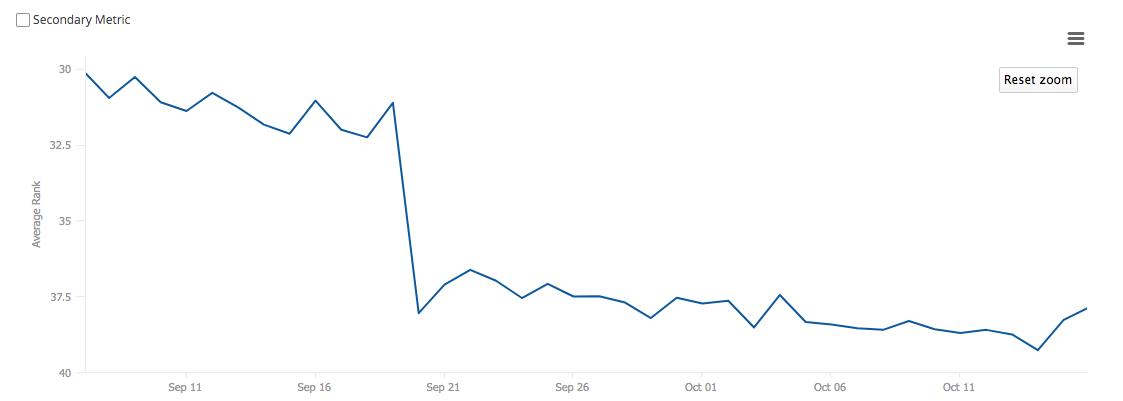
(Rankings report in seoClarity showing a keyword positions drop)
A better reaction? Learn why the rankings drop occurred. Digital marketing and SEO teams need to investigate the keyword ranking decline and explore potential causes.
There are a few things to keep in mind when you look at the example above:
- Although it might seem so at first sight, this ranking drop does not mean a penalty occurred (nor was there a complete loss of organic traffic).
- The drop could be temporary due to Google testing something in the search engine results.
- It could also be an algorithmic change happening at the time.
There could be so many other reasons for the drop, so it's important to pause and analyze the situation to discover why.
This will provide reassurance to stakeholders that you have a good handle on the situation and are working toward lifting the drop in due time.
Recommended Reading: My Rankings Haven't Dropped but My Organic CTR Tanked - Help!
How to Analyze a Sudden Drop in Rankings
I recommend a 4-step checklist approach to analyze a ranking drop. It relies on using data and analytics to answer these questions:
Let's dive into each of these steps in more detail.
#1. What Was Impacted?
First, you'll want to evaluate which specific page types or content types were affected the most. Knowing this will help you prepare a plan of action to revert the drop.
You can use a standard SEO tool to audit what was impacted. But for those who want to complete the process at scale, I'll show you how to do this within the seoClarity platform.
In Rank Intelligence, sort the results by Page to see a pivot of the keywords table, where the ranking pages' URLs are shown along with their selected metrics. This view (shown below) gives a clear picture of each page's average rank and the change over a set time period.
Note: To take into account search volume, set the metric to weighted average rank.
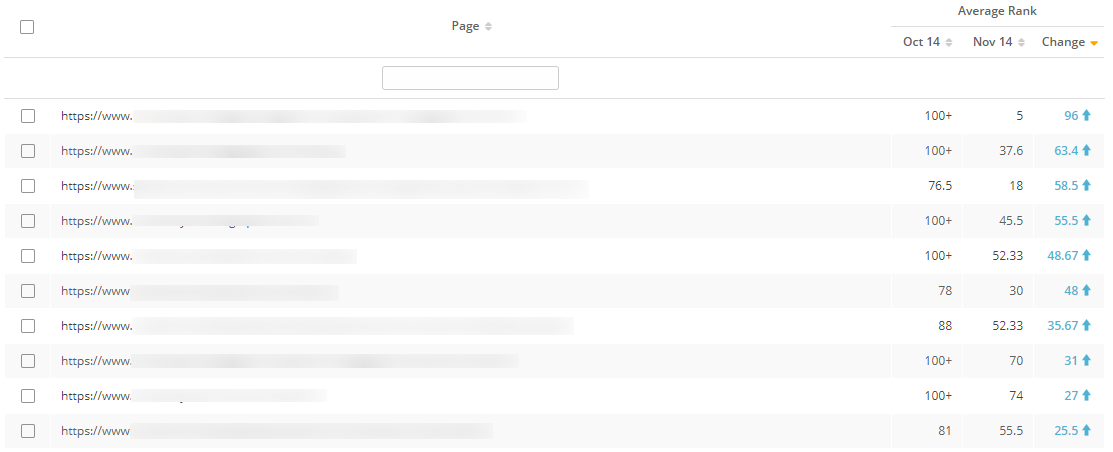 (Rank Intelligence showing the change in Pages' average ranking over a month's time.)
(Rank Intelligence showing the change in Pages' average ranking over a month's time.)
You can also filter Rank Intelligence by Folders to see a pivot of the keywords table, where the ranking folders are shown along with their selected metrics (Average Rank in this case). This reveals where the change in ranking is occurring and where I should focus my efforts to recover from the drop.
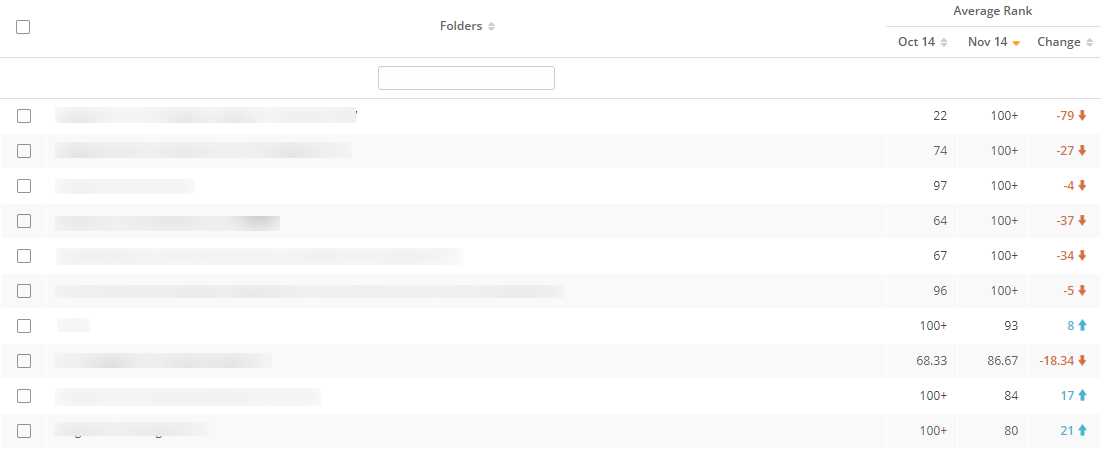 (Rank Intelligence showing the change in Folders' average ranking over a month's time.)
(Rank Intelligence showing the change in Folders' average ranking over a month's time.)
From here, you can assign your content marketing team to address content optimization efforts or adjustments.
#2. How Large Was the Impact?
The next question to answer is how many keywords have been affected. Or, to put it differently, how severe was the drop?
First, establish when exactly the drop occurred. In the seoClarity platform, go to Rank Intelligence and select the section of the traffic graph around the change.
>>> Not a client? Refer to your current SEO rank tracker tool for how to address this challenge. We've put a list together here: 12 Best Keyword Rank Trackers to Monitor SEO Performance.
The platform will zoom in on that information, allowing you to pinpoint specific dates when the drop occurred. The owner of this site, for example, will quickly see that the drop occurred between September 19 and 21.

What could I do with this information? Well, for one, I can check if there were any announced or suspected Google algorithm updates around that time.
I can also dig deeper and analyze which keywords were impacted, how many of my keywords have moved, and where they went.
Based on the report above, I know that not all of the keywords dropped. Since my rankings weren’t wiped out entirely, I can assume that the drop didn’t happen as a result of a penalty.
So, did the drop mostly occur around keywords ranking on position 1? Or were these pages typically ranking somewhere on page 2?
#3. Why Was I Impacted?
A lost keyword ranking can happen for many different reasons. To establish why it happened to you, start by ruling out a possible manual penalty. If this is the case, Google will notify you through Google Search Console, wherein you will be required to address the infraction of their guidelines.
If it's not a manual penalty, we recommend forming a hypothesis about your lost keyword rankings. For example:
- The drop happened because of something I changed on the site, or
- It happened because Google has changed something. The three most common scenarios in this hypothesis are: a.) major algorithm update, b.) SERP test or c.) increase in the Universal Ranking Types in SERPs.
How do you find the answer?
Well, to tackle the first question, all you have to do is identify what changes the webmaster or SEO team has made to the site within 7 days before the drop. For example, were there incorrectly placed redirects?
Tip: Use our built-in crawler to compare two crawls side-by-side to discover what has changed between two crawl dates.
Having that list will help you identify whether any of those changes could have impacted the rankings.
The other three questions I listed above will help you target the other hypothesis – Google conducting an algorithm change.
#4. Who Took My Positions?
The final piece of the puzzle is to identify who got my rankings. Where did my SERP visibility go and who took it from me?
It’s only natural to assume that a competitor has taken over your keyword positions. But that’s not always the case.
The chances are that Google has propagated Universal Ranking Types there, and these have pushed your rankings down.
Understanding who occupies your positions now will inform your strategies, too. If it’s a competitor who took your rankings, then you know that you can overtake them.
Perhaps you need to enhance your SEO strategy by improving your content or link building – be that through internal linking strategies or acquiring backlinks – but you can recover.
However, if Google has changed the SERP and pushed Universal Ranking Types, then there’s nothing you can do to rectify that. (Unless, of course, you decide to optimize your content to join the search features.)
So, how do you identify where your rankings went? Simply analyze your competitors’ ranking changes for the time frame around the drop.
From the Competitors’ Report in seoClarity, I can see that two particular competitors of the site I’ve been analyzing gained rankings while my site dropped.
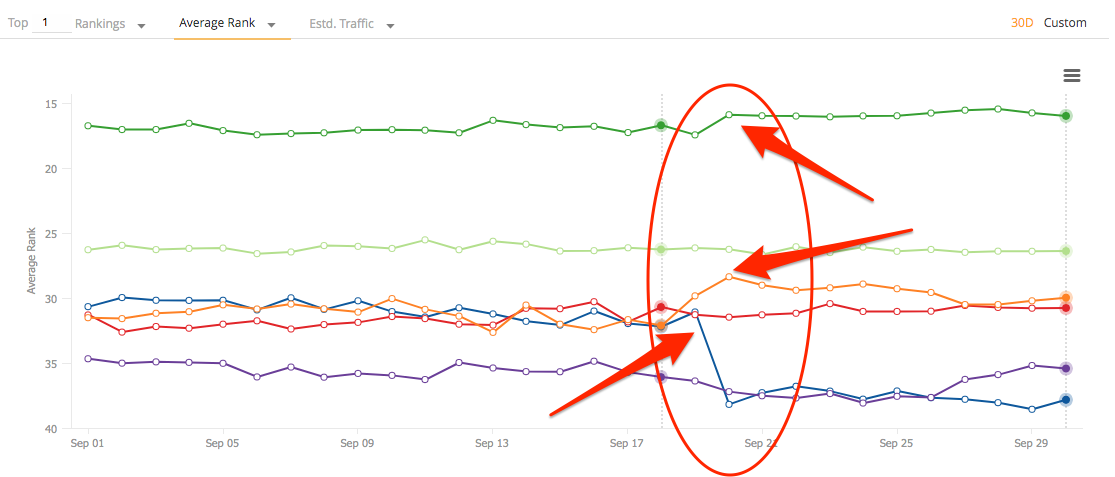
From then on, I can analyze those sites’ traffic and pages, and identify why Google might have started considering them as a greater authority than me.
Key Takeaways
Ranking fluctuations happen and, for the most part, are nothing to worry about. There may be a test of something new in the search results. Or perhaps a recent change to the site has triggered the drop.
However, it is important to learn why there has been a sudden drop in the rankings.
In this post, you've discovered how to investigate the amount of fluctuation and explore reasons that could have caused a drop in search engine results positions.
All that remains is to implement this process to analyze your rank fluctuations.
To streamline the process of analyzing ranking fluctuations at scale, request a free demo Rank Intelligence, the ONLY real-time rank tracking tool for enterprise SEO.





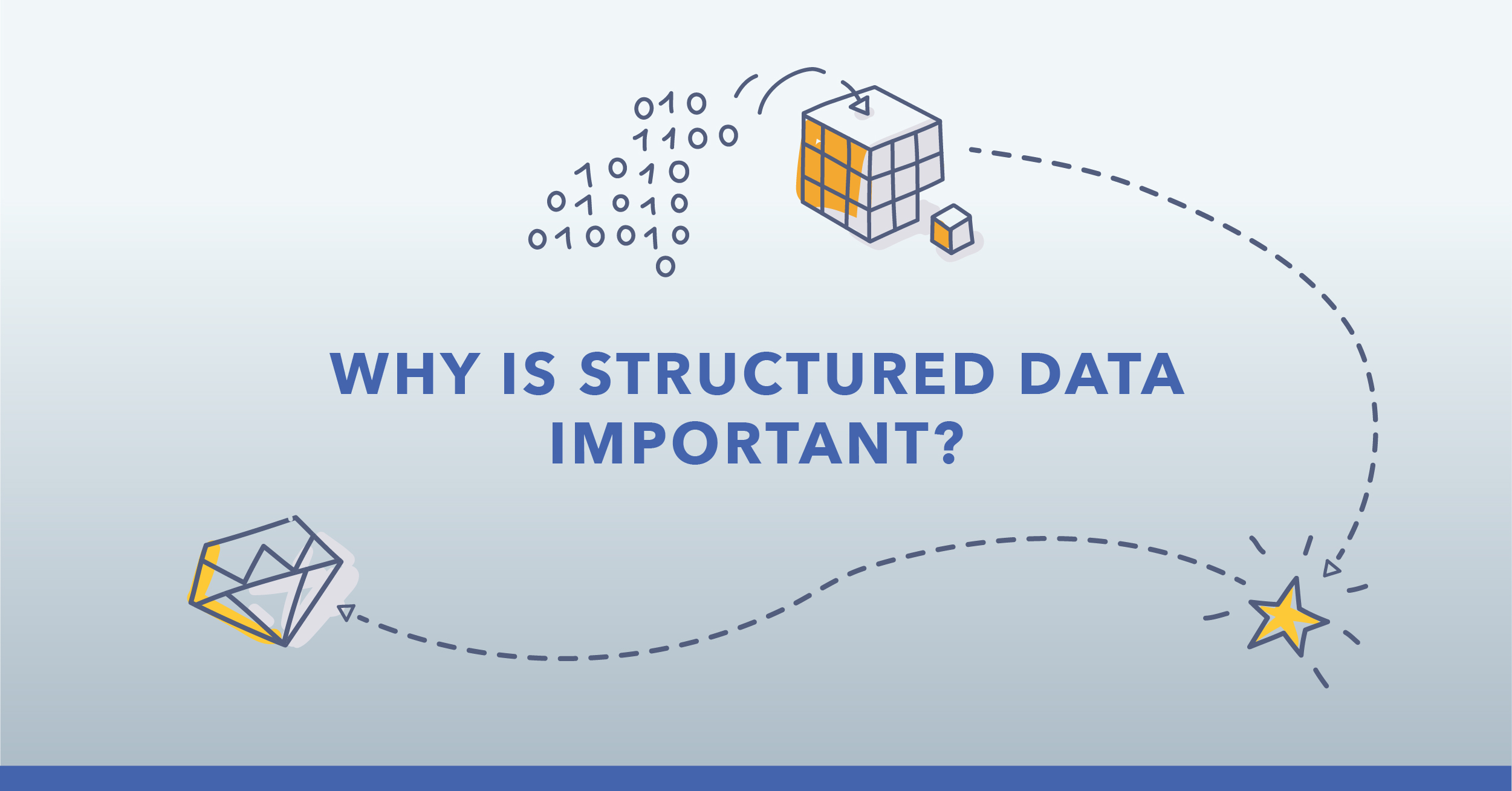

Comments
Currently, there are no comments. Be the first to post one!